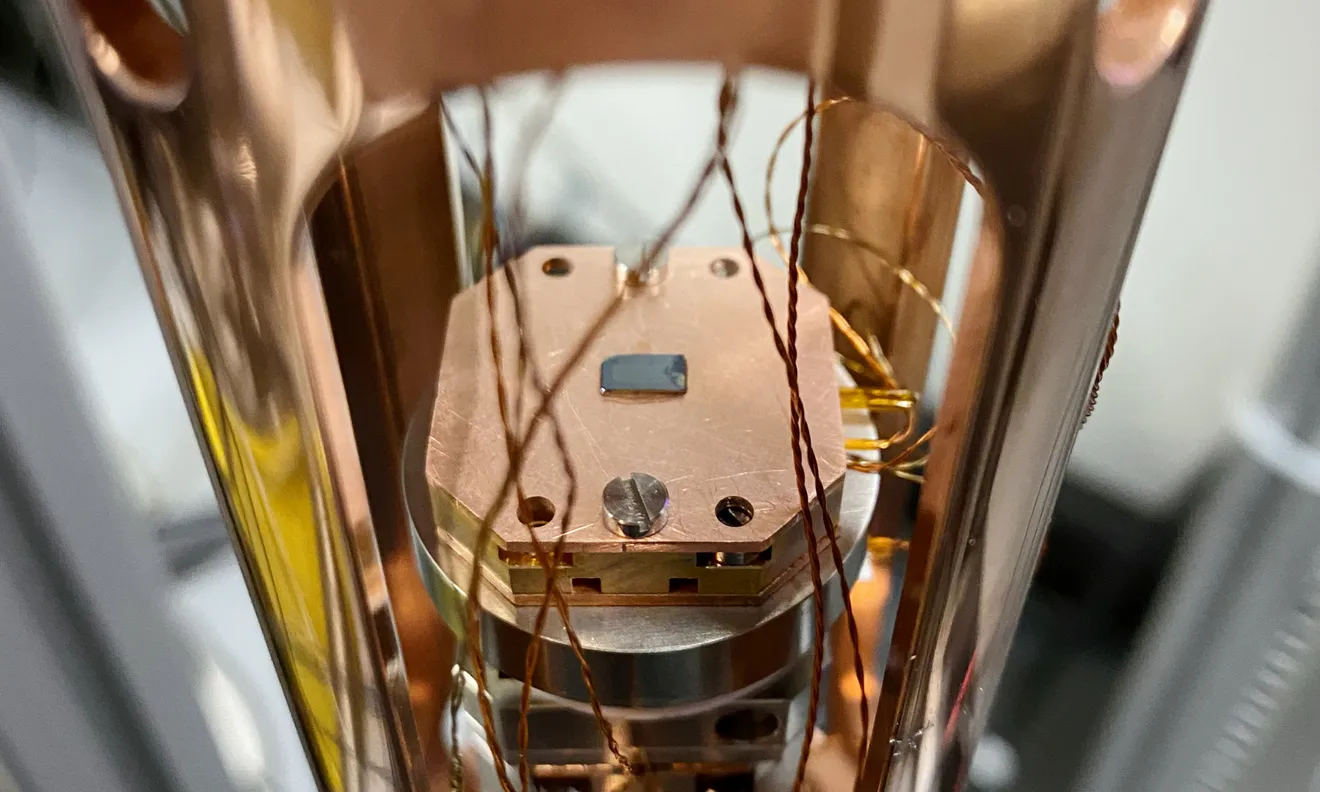A research team led by Gregor Weihs has devised a way to deliberately control dark excitons in quantum dots. The study was published in the journal Science Advances.
 Quantum dots on a semiconductor material (center of the image) can be precisely controlled. Image Credit: University of Innsbruck
Quantum dots on a semiconductor material (center of the image) can be precisely controlled. Image Credit: University of Innsbruck
Using chirped laser pulses and a magnetic field, the physicists were able to manipulate these optically inactive quasiparticles and use their unique features for quantum state storage and processing.
Solids can produce excitons, which are quasiparticles made up of bonded pairs of electrons and electron holes. Dark excitons are optically inactive, but so-called “bright” excitons are accessible because they emit light. They therefore have a far longer lifespan, which makes them perfect for storing and managing quantum states as well as utilizing them in sophisticated entanglement-generating techniques.
Now, Gregor Weihs and his group from the University of Innsbruck's Department of Experimental Physics, along with scientists from Dortmund, Bayreuth, and Linz, have shown a flexible technique for manipulating dark excitons in semiconductor quantum dots.
Florian Kappe and René Schwarz, first authors of the study, stated, “Using chirped laser pulses and a magnetic field, we can manipulate the spin state of these excitons in a controlled manner and transform bright excitons into dark ones. We can also reverse this process and turn dark excitons back into bright ones. In this way, the state can be kept in the dark for a prolonged period of time and reactivated later.”
The University of Innsbruck experiment demonstrated how an exciton was held in a dark state and then transformed back into a bright state by a subsequent laser pulse.
This opens up new opportunities for the control of quantum memories and the generation of entangled photon pairs in quantum dots.
Gregor Weihs, Research Head, University of Innsbruck
The European Union, the Austrian Science Fund (FWF), and the Austrian Research Promotion Agency (FFG) provided financial assistance for the study.
Journal Reference:
Kappe, F., et al. (2025) Keeping the photon in the dark: Enabling quantum dot dark state control by chirped pulses and magnetic fields. Science Advances. doi.org/10.1126/sciadv.adu4261